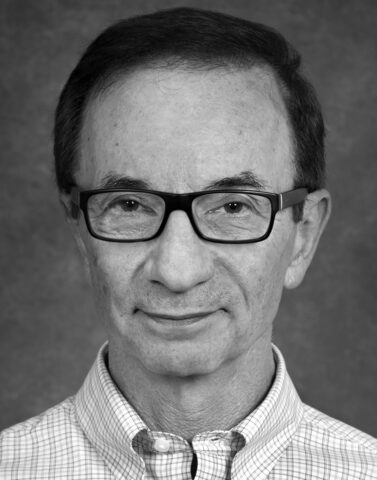Citation
To convey how richly Don DePaolo deserves the Hess Medal as recognition of his many significant contributions to the Earth sciences, I will use a recent, possibly apocryphal, story.
An officer of a distinguished scientific society enters a bar in North Tonawanda, New York, and asks the bartender, who is regarded as infallible by all patrons, how to recognize a great geochemist. The bartender replies, “You give him or her a prestigious award.” The officer of the society says, “No, no—I meant how does one know who is a truly great geochemist?” The reply to this was “it just takes four things. First, you need to find someone who has played a major role in developing new geochemical tools as Don DePaolo did with the neodymium-samarium system. Second, the new approach needs to have been effective at solving important geological problems. For examples of this you should read DePaolo’s classic monograph Neodymium Isotope Geochemistry. Third, a great geochemist will have developed powerful conceptual models such as those in DePaolo’s paper “Trace Element and Isotopic Effects of Combined Wallrock Assimilation and Fractional Crystallization,” which are now so widely used that one forgets where they came from.”
The high-ranking officer, thinking the issue resolved, runs out of the bar without waiting to hear the fourth key attribute. But a nagging thought creeps in—might there not be some bias in the bartender’s testimony given that the bar is in North Tonawanda and Don DePaolo is originally from North Tonawanda? At this point further testimonials from a number of leading Earth scientists are solicited, and the remarkable outcome is that although they were unanimous in their affection and admiration for DePaolo, each used different topics as examples of his impact across the full range of the Earth sciences. He was praised for his contributions to igneous, metamorphic, and sedimentary petrology; for developing the method for determining crustal mantle separation age; and for work on the chemical evolution of seawater and low-temperature processes during calcite precipitation.
Had the high-ranking officer stayed in the bar a bit longer, the fourth key attribute would have become clear: you need to be a great field geologist to bind the whole package together, and Don DePaolo is a perfect illustration of the importance of this trait. I’m sure I don’t have to tell you that the “an officer goes into a bar” story has a happy ending.
—Frank Richter, University of Chicago, Chicago, Ill.
Response
My thanks to the Hess Medal committee, friends, and colleagues who thought of me for this award and to AGU for continuing to provide this outstanding scientific venue. At my first AGU meeting in spring 1976 in Washington, D. C., I gave a presentation on a few neodymium isotopic analyses we had done at the California Institute of Technology (Caltech). I have not missed many meetings since. That work, with a few twists and
turns and a few other isotopes, led ultimately to my presence at this event.
It is gratifying to receive an award named for Harry H. Hess. Judging from his publications, he had many characteristics as a scientist that I admire. Although strongly attached to making measurements, he apparently was also unafraid to develop models from limited data and creatively follow the implications into uncharted territory! I discovered with a little digging that Hess and I have a few things in common. Hess started as an engineering major at an Ivy League school and switched to geology, he wrote papers on the Stillwater igneous complex, and he was a leader of the Mohole project. The last connection refers to the fact that the original proposal Ed Stolper, Don Thomas, and I submitted to the National Science Foundation (NSF) in 1986 for the Hawaii Scientific Drilling Project was for a deep core hole to penetrate the Moho under Hilo.
Not unusually, my career trajectory has involved a series of unlikely events. I am immensely pleased with where they led. The initial research direction and subsequent tendency toward directional variance were influenced by the mentorship and example of Jerry Wasserburg. Many years of friendship and collaboration with Frank Richter helped keep the fires lit. Not much would have been done without consistent and substantial research support from NSF and the U.S. Department of Energy and institutional support from the University of California (UC), Los Angeles; UC Berkeley; and the Lawrence Berkeley National Laboratory. My wife and partner for the last 30 years, Lynn Ingram, kept me balanced and almost centered while pursuing her own research.
Probably the best thing I did for science and myself over the years was recognize when colleagues were describing to me exceptionally good research ideas that deserved my attention. In this regard I will mention in particular Karl Turekian, John Rosenfeld, Joe Skulan, Ken Sims, Peter Zeitler, Mark Jellinek, Matt Fantle, and Kate Maher.
And one other thing…the bartender must have known me in another context.
—Donald J. DePaolo, University of California, Berkeley, Calif.
Citation: AGU (2015), Donald J. DePaolo receives 2014 Harry H. Hess Medal , Eos, 96, doi:10.1029/2015EO021995.
Text © 2015. The authors. CC BY-NC 3.0
Except where otherwise noted, images are subject to copyright. Any reuse without express permission from the copyright owner is prohibited.

